Ten 80s and 90s Toys That Got Banned
The 1980s and 1990s were a playground of wild toy innovation: Bright colors, crazy gimmicks, and over-the-top commercials promised endless fun. But sometimes, that fun came with a side of danger. Here’s a nostalgic (and slightly hazardous) look at 10 toys from the era that were introduced or discontinued in these decades, earning them a permanent spot on the “banned” list.
Lawn Darts (Jarts)
Introduced: 1960s, popular in 1980s | Banned: 1988
Heavy, metal-tipped darts marketed as a backyard game quickly became the ultimate combination of family fun and accidental weaponry. Children (and sometimes adults) got seriously injured when darts missed their rings. After multiple fatalities, the U.S. Consumer Product Safety Commission banned them in 1988, officially turning what once was summer entertainment into an illegal collectible.
Interesting Facts:
The U.S. Consumer Product Safety Commission received thousands of injury reports before banning them.
Lawn Darts were actually rebranded as “safety darts” with rounded tips for a short while, but the original deadly version was never legally resold.
Collectors now pay hundreds of dollars for unopened sets, proof that nostalgia loves danger.
Jarts ad poster circa 1969
60 Minutes segment about David Snow’s crusade to convince the government to ban lawn darts, 1988. This story won the Peabody award for Journalism the year that it aired.
Snacktime Cabbage Patch Kid
Introduced: 1996 | Discontinued: 1997
Mattel thought Cabbage Patch Kids could eat plastic fries. What could go wrong? The dolls had a mechanical jaw with no off-switch. Kids’ hair, fingers, and clothing often got caught, resulting in painful mishaps and widespread complaints. The Snacktime Kid was pulled after a short run, earning its reputation as the only doll capable of “snacking” on humans.
Interesting Facts:
Over 100 incidents were reported of children getting their fingers caught in the doll’s mouth.
Snacktime Kids came with toy accessories like mini plates and French fries, but ironically, they were “dangerous” at snack time.
Today, they’re sought-after collectibles precisely because of their notoriety.
Snacktime Cabbage Patch Kid, 1996
Snacktime Cabbage Patch Kid kinda reminds me of Chucky from Childs Play.
Cabbage Patch Kids Snacktime Kid television ad, October 1996
Sky Dancers
Introduced: 1994 | Recalled: 2000
Sky Dancers were pastel fairies launched by a ripcord, promising graceful flight across bedrooms. In reality, they were flying missiles. Injuries to eyes, teeth, and furniture forced a recall of nearly 9 million units. Kids who grew up in the ’90s remember dodging these airborne fairies like tiny, winged kamikazes.
Interesting Facts:
Over 8.9 million units were recalled worldwide.
Sky Dancers were inspired by ballet and gymnastics, and the dolls were designed to spin like a pirouetting dancer.
The line included different characters like Sky Dancer Starburst and Sky Dancer Rainbow, each with pastel-colored wings.
Three girls with Sky Dancers in 1990s ad
Sky Dancers television ad 1990s
Moon Shoes
Introduced: Late 1980s | Fell out of popularity: early 1990s
Mini trampolines for your feet, Moon Shoes were perfect for aspiring astronauts or anyone with a love for faceplants. Twisted ankles and stubbed toes were common, but the appeal of bouncing “like the moon” kept them briefly popular. Their fad faded as playground injuries piled up.
Interesting Facts:
Moon Shoes were part of the ’80s fitness fad craze, alongside roller skates and pogo sticks.
The toy came in kid and adult sizes, though adults rarely survived the first bounce.
Some variations had neon designs with “space-age” decals, giving every fall a futuristic flair.
Moon Shoes in action
Moon Shoes television ad, 1993
Rollerblade Barbie
Introduced: 1991 | Discontinued: Early 1990s
Barbie’s rollerblading adventure came with a surprise: sparking wheels. Kids could create sparks indoors while rolling Barbie across the floor. Fun… until carpets, curtains, or doll clothing caught fire. It was discontinued after a short run, cementing Barbie’s place in the “too hot to handle” hall of fame.
Interesting Facts:
The doll included neon-colored rollerblades to match Barbie’s bright 90s wardrobe.
Commercials featured Barbie skating through futuristic cityscapes, completely ignoring indoor fire hazards.
Only a few production runs were made, making Rollerblade Barbie a rare collectible today.
Rollerblade Barbie figures modeled
Rollerblade Barbie from Mattel, 1992
Did the 2023 Barbie movie get inspiration from Rollerblade Barbie? I think so!
Water Yo-Yo Balls
Introduced: Mid-1990s | Banned/restricted: Late 1990s–early 2000s
These liquid-filled balls with elastic cords were playground hits until the cords became strangulation hazards and the bouncing balls snapped unexpectedly, hitting eyes. Many schools banned them, and some countries restricted their sale entirely. A classic case of “fun in theory, disaster in practice.”
Interesting Facts:
Many schools issued outright bans after kids got tangled or hurt during recess.
Water Yo-Yos were sometimes sold as “stress balls” in addition to being a playground toy.
The liquid inside sometimes leaked, leaving sticky, slippery messes on floors.
A package of modern Yo-Yo Water Balls from the Phillipines
Office Playground demonstrates the satisfaction of a Water Yo-Yo
Pogo Bal
Introduced: 1986 | Fell out of popularity: early 1990s
Part pogo stick, part rubber ball, Pogo Bals promised endless bouncing fun. Kids quickly discovered that balancing on a rubber sphere while bouncing often led to spectacular falls. Though not officially banned, their prevalence in schools and playgrounds plummeted after repeated injuries.
Interesting Facts:
Pogo Bals were marketed as “athletic toys” to help kids exercise.
Advertisements often featured kids bouncing in suburban driveways wearing matching neon clothes.
Despite injuries, they enjoyed a short-lived fad due to commercials featuring upbeat techno jingles.
“Jump out of the 50s and into the 80s" Pogo Bal ad, 1987
Pogo Bal television commercial, 1987. I think they must have had wires or something because I couldn’t get a Pogo Bal to bounce ounce. Worst toy of the 80s hands down.
Clackers
Introduced: late 1960s | Banned in many schools: Early 1990s
Clackers were two acrylic balls on a string, designed to hit each other in rhythmic fashion. Kids loved the satisfying “clack,” but the balls were hard enough to break teeth, fingers, and sometimes windows. Schools quickly banned them, turning these simple toys into a short-lived craze.
Interesting Facts:
The balls were often marketed as “skill toys” that built coordination.
Many Clackers broke in half and sent shards flying, prompting school bans.
They were sometimes called “ker-bangers” in advertisements, emphasizing the aggressive “clack” sound
Clackers. I remember teachers being engaged by these things!
“Miracle Klackers for Everyone” TV commercial 1970s
Aqua Dots / Bindeez
Introduced: Late 1990s | Recalled: 2007
Aqua Dots were small beads that fused when sprayed with water, letting kids craft colorful designs. Unfortunately, some beads metabolized into a dangerous chemical if swallowed. Though technically just past the 1990s, they reflect the “interactive toy hazard” trend of the era, leading to a worldwide recall.
Interesting Facts:
Aqua Dots encouraged creativity in a similar vein to Perler beads, popular at the time.
Children were instructed to spray water over beads in a simple art process, unaware of the toxicity hazard.
Collectors today sometimes seek the early, non-toxic versions for nostalgia.
Aqua Dots packages
“Aqua Dots Mimic Date Rape Drug When Swallowed!” Fox 29 news report
Slap Bracelets
Introduced: 1990 | Banned in schools: Early 1990s
Slap bracelets were a fashion phenomenon. Kids loved slapping them on wrists, arms, and anything within reach. But when the fabric wore out, the metal inside could slice skin. Schools banned them en masse, and parents breathed sighs of relief everywhere.
Interesting Facts:
Advertisements marketed them as “cool and fun” for playgrounds, but teachers saw them as tiny weapons.
They came in all colors and patterns, from neon snakes to metallic glitter.
Even celebrities got caught in the fad. Every kid wanted one for back-to-school bragging rights.
Various 90s style slap bracelets
Man in Charlotte Hornets jacket demonstrating slap bracelet. Does anyone know who he is?
Conclusion
The 1980s and 1990s were a wild, chaotic time for toy designers. They aimed for spectacle, novelty, and sheer “wow” factor, sometimes forgetting that sharp metal, flying dolls, or chewing mechanisms could make for a hazardous playtime. These toys, banned or discontinued, now live on in nostalgia blogs, YouTube clips, and the memories (and scars) of Gen X and Millennials.


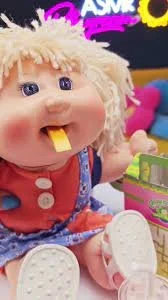
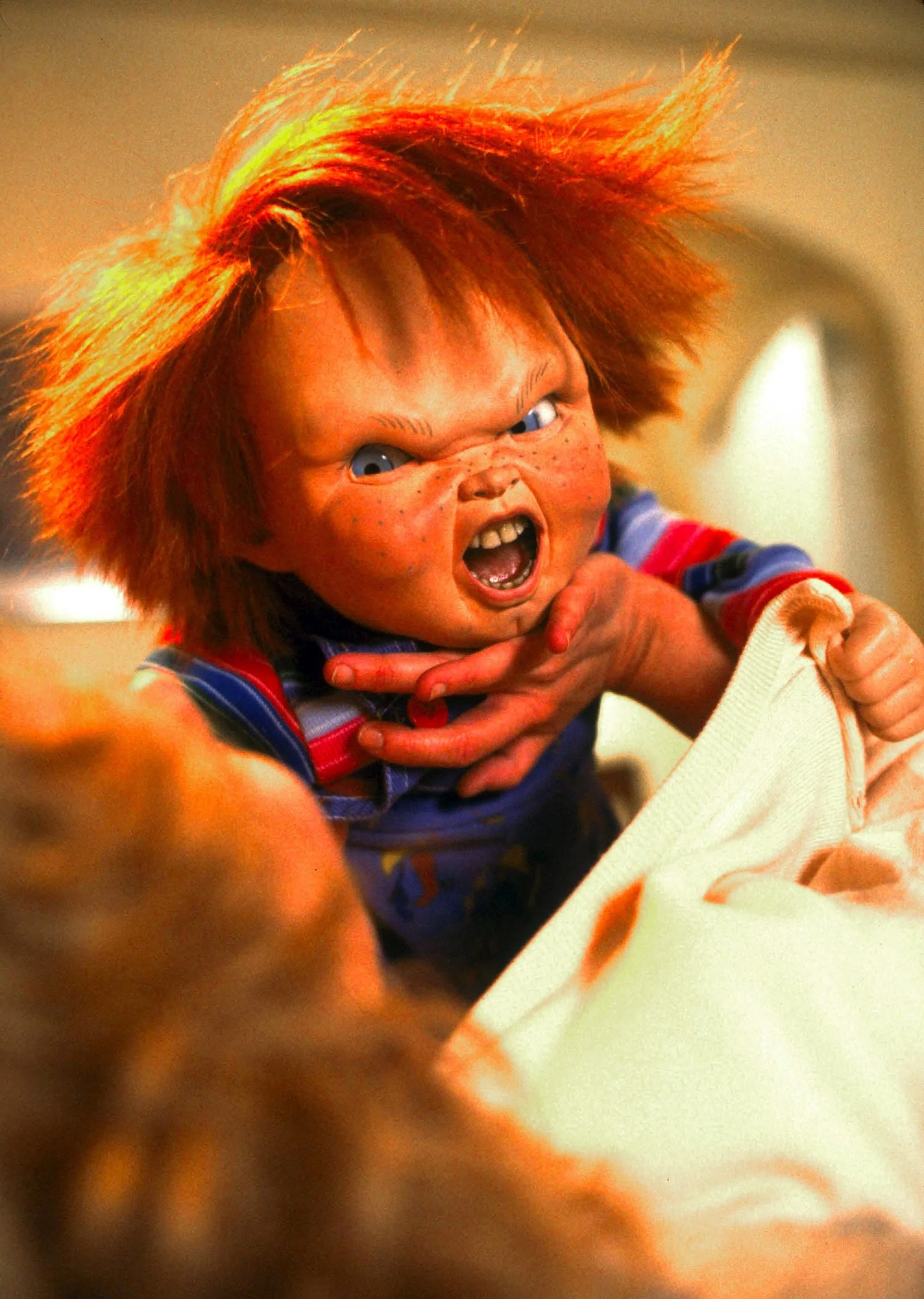

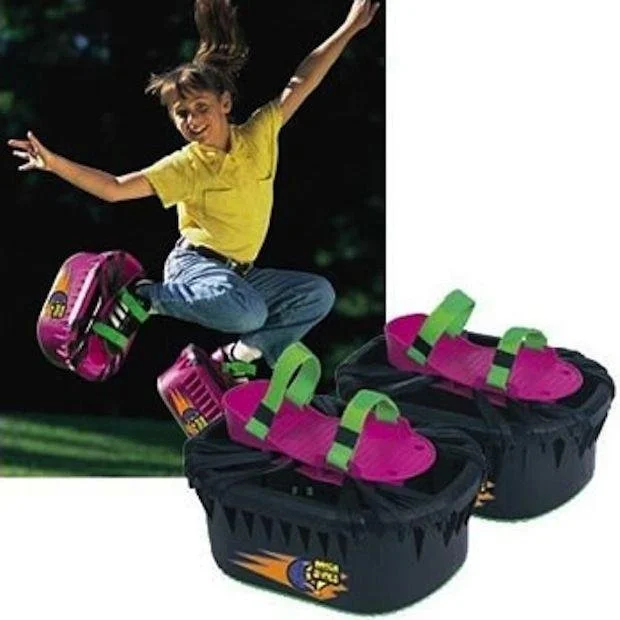
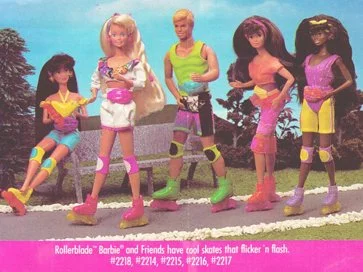
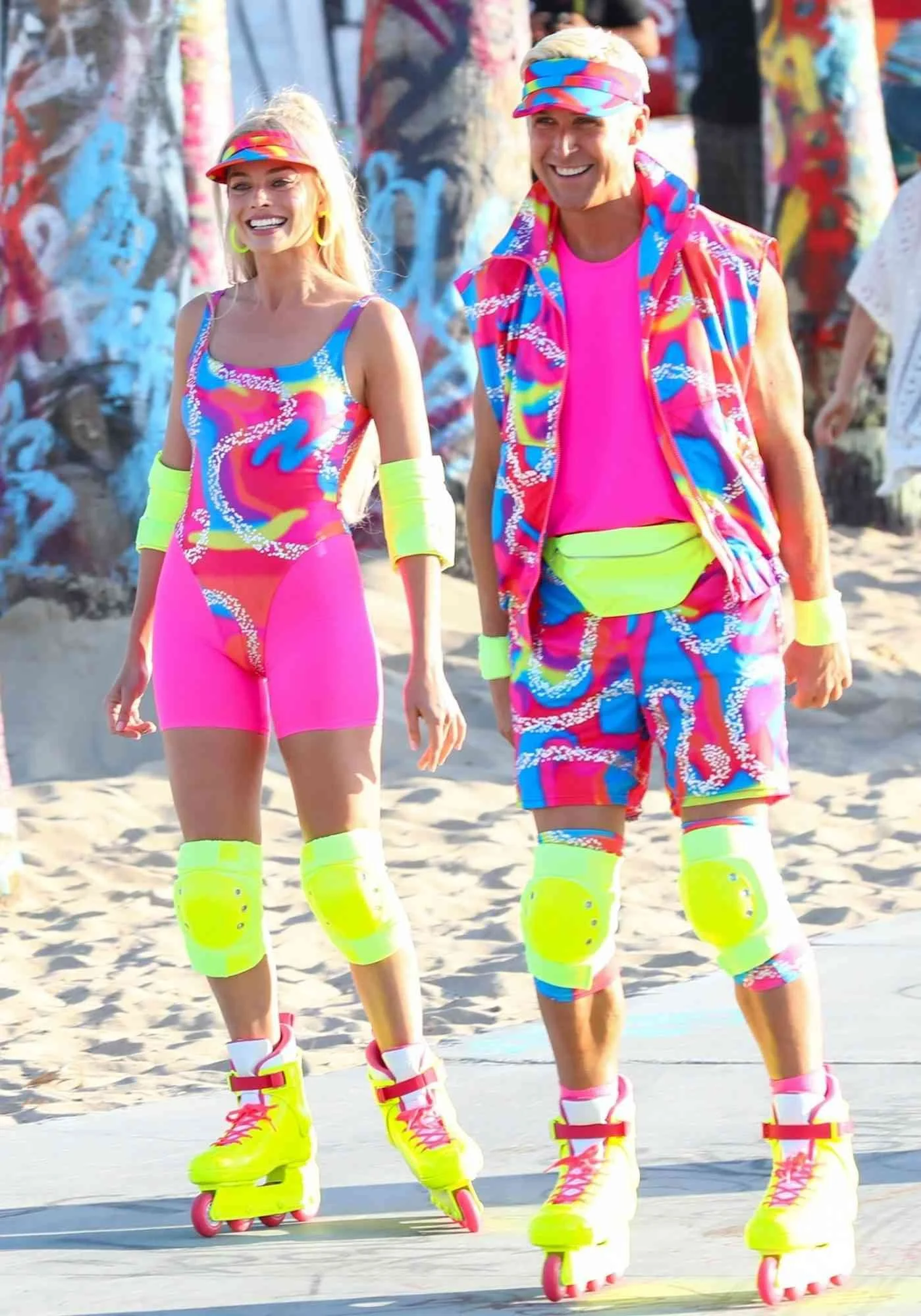


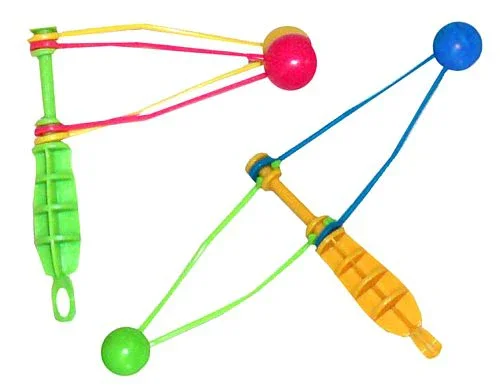


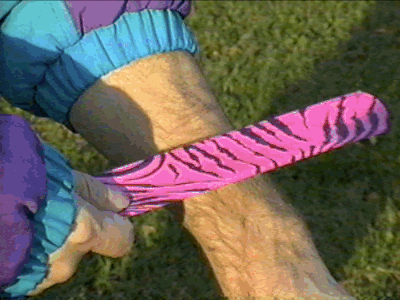


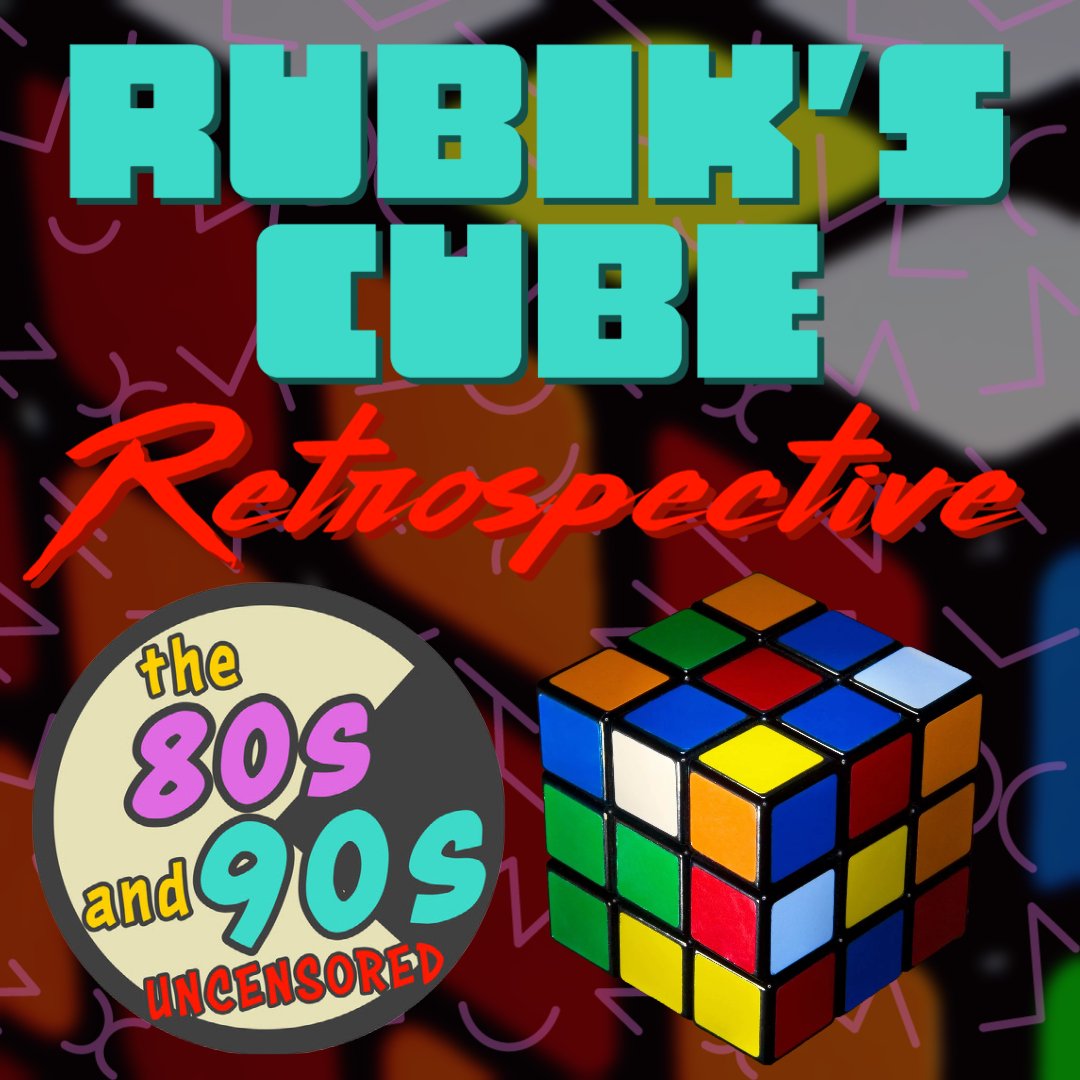




We’re joined by Sarah Reichert and Kerrie Flanagan, authors of “Back to the 80s” to discuss what makes the 80s special.